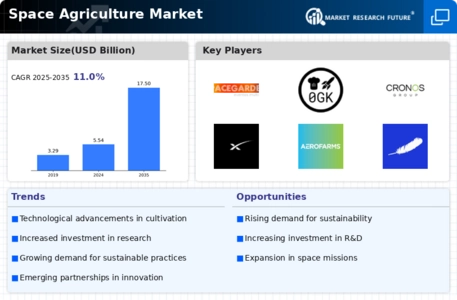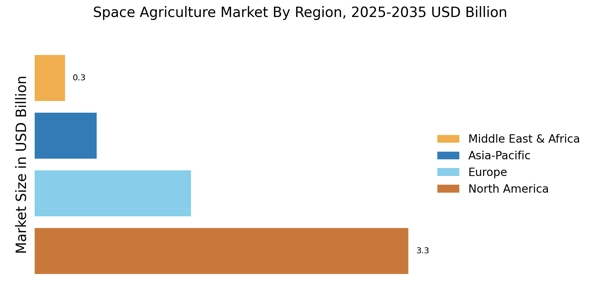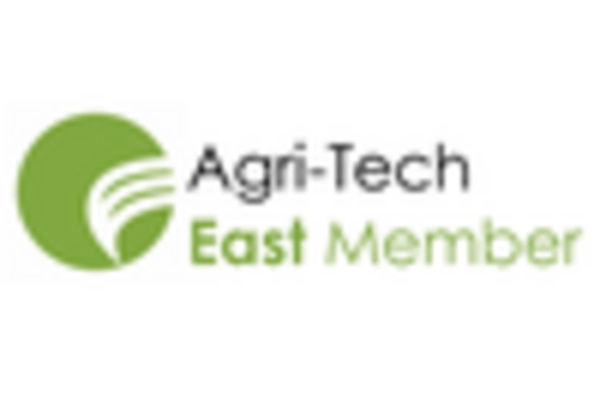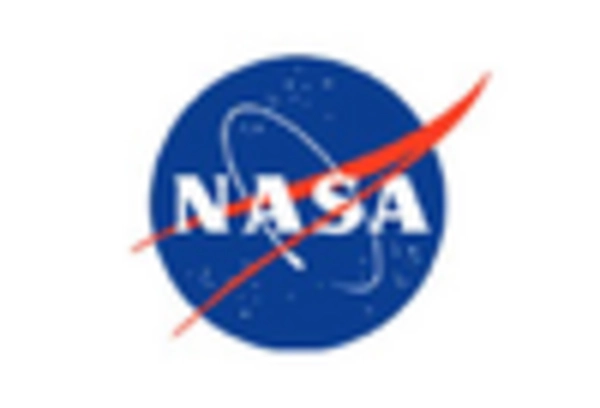Environmental Challenges on Earth
The Space Agriculture Market is also shaped by the environmental challenges faced on Earth. Issues such as climate change, soil degradation, and water scarcity are prompting researchers to explore off-world agricultural solutions. The development of space agriculture technologies may provide insights into sustainable practices that can be applied on Earth. For instance, techniques developed for growing crops in space could lead to more efficient use of resources and reduced environmental impact. This dual benefit enhances the appeal of the Space Agriculture Market, as it not only addresses the needs of space missions but also contributes to solving terrestrial agricultural challenges.
Growing Interest in Space Colonization
The Space Agriculture Market is influenced by the growing interest in space colonization. As humanity contemplates the establishment of permanent settlements on other celestial bodies, the need for sustainable food production becomes paramount. Research indicates that food production systems must be developed to support a population of thousands on Mars or the Moon. This has led to collaborations between space agencies and agricultural firms, fostering innovation in crop cultivation techniques. The potential market for space agriculture solutions could reach 5 billion dollars by 2035, driven by the necessity of creating self-sustaining ecosystems in extraterrestrial environments. Thus, the Space Agriculture Market is at the forefront of this transformative endeavor.
Increased Investment in Space Exploration
The Space Agriculture Market is likely to benefit from the increasing investment in space exploration initiatives. Governments and private entities are allocating substantial resources to missions aimed at establishing human presence on Mars and the Moon. For example, NASA's Artemis program aims to return humans to the Moon by 2024, necessitating sustainable food production systems. This investment is projected to reach over 30 billion dollars in the next decade, creating a robust demand for agricultural solutions tailored for space environments. As a result, the Space Agriculture Market is poised for growth, driven by the need for innovative agricultural practices that can support long-term human habitation in space.
Advancements in Space Farming Technologies
The Space Agriculture Market is experiencing a surge in advancements related to farming technologies. Innovations such as hydroponics, aeroponics, and advanced LED lighting systems are being developed to optimize plant growth in extraterrestrial environments. These technologies are crucial for ensuring food security during long-duration space missions. For instance, NASA's Veggie experiment has demonstrated the feasibility of growing crops in microgravity, which could lead to a market valuation of approximately 3 billion dollars by 2030. The integration of artificial intelligence and robotics in monitoring plant health and automating cultivation processes further enhances productivity, making these advancements pivotal for the Space Agriculture Market.
Public Awareness and Interest in Space Science
The Space Agriculture Market is experiencing a boost from the increasing public awareness and interest in space science. Educational initiatives and media coverage of space missions have sparked curiosity about the potential for life beyond Earth. This heightened interest is likely to drive support for funding and research in space agriculture. As more individuals become engaged with the concept of growing food in space, there is a corresponding increase in demand for educational programs and technologies related to space farming. This trend could lead to a market expansion, with projections suggesting a growth rate of 15% annually in the Space Agriculture Market over the next five years.


















Leave a Comment